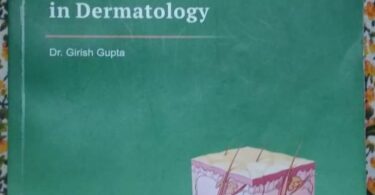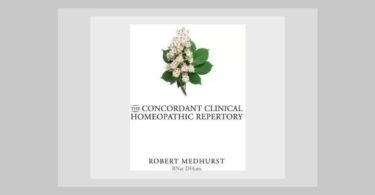Title: Organon Reflections, Bringing Homeopathic Philosophy Into Today’s Medical Practice

Author: Wendy Jensen
Publisher: Narayana Verlag, Germany
ISBN: 978-3-95582-250-7
Year of publication: 2023, first edition, 346 pages, black and white, paperback
The Organon is a gift from Dr. Samuel Hahnemann to all homeopaths. The sheer beauty of this eternal and timeless gift is that it keeps on giving. There are many who have thought deeply about the Organon. Some of these thinkers have written down their musings, and how they understand what the Organon is trying to convey.
I find such exercises very interesting. When I learned about Dr. Wendy Jensen’s book, Organon Reflections, bringing homeopathic philosophy into today’s medical practice, I was eager to read it right away. Why? Simply because non-human animals – wild and even domesticated species – follow the laws of nature.
They live in the present moment. They do not lie, pretend, try to impress, or suppress their responses, or tow the lines drawn by the mainstream medicine, media, and money bags. Besides, Dr. Jensen is an accomplished and experienced veterinary physician.
In her lifetime, she must have prescribed homeopathic remedies to thousands of animals…and observed their response firsthand. How did the animals respond to the remedies? How did their symptom picture change? Did the cure follow the natural order and law as described in the Organon?
Did the animals know they were being given a remedy that is generally called by the mainstream as nothing but a placebo? Answers to all these questions must be based purely on the veterinary physician’s observations of his animal patients, and physical exams as well as occasional lab tests and radiographic imaging.
You can imagine why I am totally into reading an interpretation of the Organon by a veterinary physician – the highest evidence that homeopathy works, is to be found in the non-verbal expressions of the animals being treated with homeopathy. Truth does not become simpler than this.
Now let us see what Dr. Jensen shares with us in her book, “Organon Reflections, Bringing Homeopathic Philosophy Into Today’s Medical Practice”.
Dr. Jensen states, “Only by standing on the shoulders of those who came before me can I reach heights that otherwise would be completely inaccessible.” She has a point. She has structured her book in line with Wenda O’Reilly’s 1996 translation, Organon of the Medical Art, and followed each aphorism with personal reflections and case stories from her practice.
Reading further along, you will find that the aphorisms are grouped under headings, for example, principles of cure, understanding the diseases, taking the case, acquiring the knowledge of medicines, homeopathic treatment of diseases, the chronic miasms, mental and emotional diseases, intermittent diseases, case management, preparation of medicines, administration of medicines, and other therapeutic approaches.
These are also the chapters in the book. Under these chapters, the aphorisms are presented. These are followed by Dr. Jensen’s musings, or how she makes sense of the aphorism and internalizes the nugget of truth contained in them. I found Dr. Jensen’s musings both hilarious and thought provoking simultaneously.
As it turns out, our pets and other animals do have body constitution, mental and emotional character, occupations, lifestyle and habits, civic and domestic relationships, age, as well as sexual functions. ‘Indeed! Yes, indeed!!’ Many of you who have an animal companion, would say. The Organon describes these aspects of a human patient, and Dr Jensen shows us in this book that our animal companions are no different when it comes to these details.
The cases from Dr. Jensen’s experience of treating her animal patients, do read like crisp and short stories in which the main character is the animal being treated. Description and feedback from the humans accompanying Dr. Jensen’s animal patients, are inextricably woven with her own unprejudiced observations and questions.
Eventually, this exercise leads to eliciting strange, rare, and peculiar symptoms that enable her to come up with a successful prescription for her animal patients. As these stories form, you can see that she has done her absolute very best to stay true to the Organon. Such a commitment infuses the book with unmistakable authenticity.
As I am reading the book, smiling to myself, nodding my head in agreement and amusement, it occurs to me that if ever a grandma or grandpa wants to teach homeopathy to their young grandchildren, the best book to do so would be a picture book based on this book by Wendy Jensen.
Place a picture of the sick animal on one page. Place a bubble describing the key SRPQ symptoms. On the opposite page, place the remedy name and the picture of the animal, now totally healthy after taking the remedy. It is just an idea, but I am hoping someone would take on a project of such a magnitude. After all, collectively we do have to keep homeopathy alive and well for our next generation.
I will conclude this review with one example:
Aphorism # 106
“The entire disease arousing efficacy of the individual medicines must be known; that is, all the disease symptoms and condition-alterations that each medicine is especially able to engender in healthy people must first have been observed before one can hope to be able to find and select from among the proven medicines, the apt homeopathic remedy for most of the natural diseases.”
Dr. Jensen’s musing:
Hahnemann is saying that we need to know exactly what symptoms the remedies match. This is critical to being able to give a remedy covering the exact symptoms of the patient. Elegant and simple.
Case example:
S, a 5-year-old neutered male cat, was viciously beating up his feline housemate. This had been going on for three months, ever since he had been treated with antibiotics for infected gums. Lachesis fit his presumed jealousy, his excessive sexual desire, his inflamed gums, and his easy startling. Twenty-four hours after the dose, he was his old lovable self again. Match remedy to symptoms and magic happens.
While this book is a look-back on a seasoned veterinarian’s practice and how her day-to-day work connected her to the Organon, it is a source of examples about how the aphorisms can be verified every day of our work as homeopaths. For this reason, I strongly recommend this book to all my peers – irrespective of whether their patients happen to be people or animals.
Thank you, Dr. Wendy Jensen, for writing this marvelous book.






